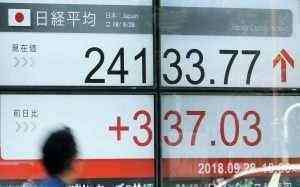IFRS 9 creates challenges for corporates

The provision for bad debt is estimated each year at the end of the accounting period. This way the matching principle of accounting is followed and no GAAP is violated. Bad debt is considered a normal part of operating a business that extends credit to customers or clients.

Bad debt is a reality for businesses that provide credit to customers, such as banks and insurance companies. Planning for this possibility by estimating the amount of uncollectible loans is called bad debt provision and can enable companies to measure, communicate, and prepare for financial losses. The journal entry required to reduce the provision for bad debts is posted directly to equity.
How confident are you in your long term financial plan?
While some of these benefits may not apply to your situation right now, they could if your income or family size changes in the future. Plus, there are more changes to SAVE rolling out in 2024 that could make it even more attractive for you. Borrowers currently on those plans will be able to stay on them, but you will not be able to enroll or re-enroll if you leave the plans after July 1, 2024.
- This may help you pay off your debt faster, but some borrowers prefer the stability of knowing they’ll have the same monthly payment for the duration of their repayment.
- This small balance is most often estimated and accrued using an allowance account that reduces accounts receivable, though a direct write-off method (which is not allowed under GAAP) may also be used.
- Payments received later for bad debts that have already been written off are booked as bad debt recovery.
It is almost impossible to say, with any great degree of accuracy, which debtor will lead to bad debt. We also allow you to split your payment across 2 separate credit card transactions or send a payment link email to another person on your behalf. If splitting your payment into 2 transactions, a minimum payment of $350 is required for the first transaction. Bad debt provision was recently added to the course content of Financial Accounting. Learn more from Professor Narayanan about its timeliness and the full course update in the video below.
This allowance accumulates across accounting periods and may be adjusted based on the balance in the account. With the above in mind, at the end of 2015, it is not necessary to create a fresh provision for bad debts at the full 2% of the debtors outstanding. Understandably, such a bad debt should not be debited to the bad debts expense account.
Bad Debt Expense Definition and Methods for Estimating
It is a part of operating a business if that company allows customers to use credit for purchases. Bad debt is accounted for by crediting a contra asset account and debiting a bad expense account, which reduces the accounts receivable. This can be done through statistical modeling using an AR aging method or through a percentage of net sales. Now, if we debit Year 2015’s bad debt expense account with only $1,320 and debit the provisions for bad debts account with $4,100, this will bring down the provisions account balance to $1,500 (Balance b/f $5,600 less $4,100). If the following accounting period results in net sales of $80,000, an additional $2,400 is reported in the allowance for doubtful accounts, and $2,400 is recorded in the second period in bad debt expense.

For borrowers earning $32,800 a year or less (or $67,500 and under for a family of four), your monthly payment will be $0. If this is the case, you should tighten up your credit control policy to prevent it from happening in the future. Your customer’s bank credit line may have been withdrawn, curtailing his or her operating capital. The market may have turned down suddenly, impacting sales and the overall busines model. The next year, when Company X wrote off the balance of Customer A, the Allowance for Bad Debts decreased and so did the customer balance which is an Accounts Receivable account. In turn, the total collectible is reduced and so does the Net Income of the company.
What is bad debt write-off?
He estimates that out of this $280,000, approximately 2% will prove to be bad debt in 2015. Once doubtful debt for a certain period is realized and becomes bad debt, the actual amount of bad debt is written off the balance sheet—often referred to as write-offs. This may help you pay off your debt faster, but some borrowers prefer the stability of knowing they’ll have the same monthly payment for the duration of their repayment. You also have to recertify your income every year in order to stay on the SAVE plan, which means every year your salary goes up, your payment likely will too. This could be an especially helpful benefit for borrowers who expect to significantly increase their salaries in the future.
BMO, Scotiabank miss profit estimates as bad loan provisions, costs … – Reuters.com
BMO, Scotiabank miss profit estimates as bad loan provisions, costs ….
Posted: Tue, 29 Aug 2023 07:00:00 GMT [source]
This is because it is hard, almost impossible, to estimate a specific value of bad debt expense. Sometimes people encounter hardships and are unable to meet their payment obligations, in which case they default. Therefore, there is no guaranteed way to find a specific value of bad debt expense, which is why we estimate it within reasonable parameters.
Reason for Bad Debt Provision
The accounts receivable aging method groups receivable accounts based on age and assigns a percentage based on the likelihood to collect. The percentages will be estimates based on a company’s previous history of collection. A provision for bad debts is the amount of receivable where the accounts manager feels that certain receivable amount could not be recovered.
This method applies a flat percentage to the total dollar amount of sales for the period. Companies regularly make changes to the allowance for doubtful accounts so that they correspond with the current statistical modeling allowances. Bad debt expense is a natural part of any business that extends credit to its customers. Because a small portion the difference between bad debt and doubtful debt of customers will likely end up not being able to pay their bills, a portion of sales or accounts receivable must be ear-marked as bad debt. This small balance is most often estimated and accrued using an allowance account that reduces accounts receivable, though a direct write-off method (which is not allowed under GAAP) may also be used.
Bank of Montreal profit falls on higher bad loan provisions – msnNOW
Bank of Montreal profit falls on higher bad loan provisions.
Posted: Tue, 29 Aug 2023 10:10:30 GMT [source]
This estimate can’t be directly written off from the accounts receivable account since no specific invoice can be proven bad in the present. As per the generally accepted accounting principles (GAAP), these expected uncollectible invoices shall be reported as an expense. As per the international accounting standards (IAS), any expense incurred shall be reported on the income statement of the entity. Bad debt is an amount of debt that a business fails to recover from its debtors. At the end of each financial year, most businesses that offer credit to their customers have significant amounts owed to them by their debtors.
This is the amount of reserve against future recognition of certain accounts receivable that would not be collectible. Specific allowance refers to specific receivables that you know are facing financial problems, and so may be unable to pay off the debt. General allowance refers to a general percentage of debts that may need to be written off based on your business’s past experience.
Beginning in 2024, those with principal loan balances of $12,000 or less can have remaining balances forgiven after just 10 years of payments on the SAVE plan. You’ll need to make payments for an additional year for every $1,000 you borrowed above $12,000 up to 20 or 25 years, depending on the degree. Once that doctor starts earning a higher salary, they may consider a different repayment plan, Williams https://online-accounting.net/ says, but they’ve reaped the benefit of saving on extra interest while they were on the SAVE plan. They could, of course, remain on SAVE, but with annual income certifications, their payment will rise along with their salary. The Department of Education recently opened applications for the SAVE plan ahead of the expiration of the pandemic moratorium on payments and interest in September.
This is a more conservative provision strategy and can be helpful in times of unexpected crisis. If your company’s bad debt exceeds the original estimate, you’ll be required to list it as a bad debt expense on your income statement. By making a more conservative provision, your company can avoid having to pay those expenses.
In such cases, businesses need to be prepared for the financial impact it could have on their bad debt expenses. A customer has been invoiced a total of 500 for goods and the business has decided that there is doubt as to whether the customer can pay in full. They have decided to make a bad debt provision (allowance for doubtful accounts) against the debtor of 200. This is applicable when you have already accounted for VAT but your customer defaults on full or partial payment.
The SAVE plan isn’t available for parent Plus borrowers
The specific percentage typically increases as the age of the receivable increases to reflect rising default risk and decreasing collectibility. This expense is called bad debt expenses, and they are generally classified as sales and general administrative expense. Though part of an entry for bad debt expense resides on the balance sheet, bad debt expense is posted to the income statement.